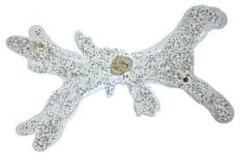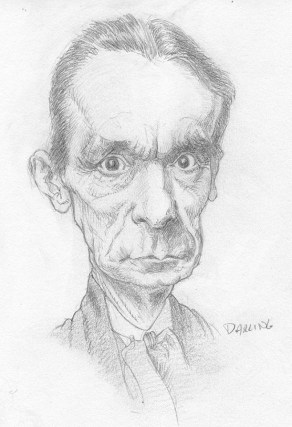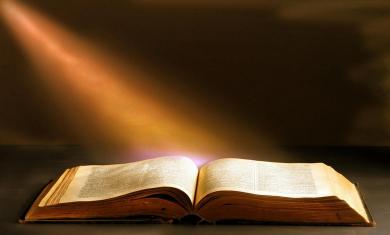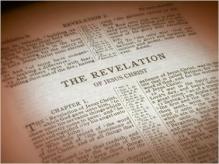Let’s jump train! But in order to make sure we have a safe landing, let’s be reminded that “Harold believed that the laws and findings of the sciences are simply developments in the expression of truth that has been intuitively grasped and poetically stated in the great religions. He believed that as Jesus studied the Scriptures he saw in them the same thing that he, Harold, saw in them and also in the records of Jesus’ drama: these writings embody a symbolical representation of the underlying laws functioning throughout nature.” (Winifred Babcock)
With this firmly under our belts we let Harold begin:
Pierre Teilhard de Chardin postulates that consciousness is the force
that raised up life from matter, and that consciousness is life’s goal. The Adam-Eve drama depicts life’s seeking an enlarged consciousness… The legend presents them first in what might be called “plant life” or “garden-being” – other legends and symbols dealing with “Cosmic Man” also indicate that he, or life, must be seen first as plant… To examine man in his original form, one must examine animal life in its first form, in the form of a one-cell creature. Thus, in his beginning, man must be seen as a one-cell creature, and one fold of the Eden legend tells of the Adam-cell – which is to say, Adam may be seen as a symbol of the simplest form of life, amoeba, for he follows amoeba’s path.
 It is at this point, approaching the human being beginning as amoeba, that we turn aside to briefly examine one of the 20th century’s greatest inner archeologists, Rudolf Steiner.
It is at this point, approaching the human being beginning as amoeba, that we turn aside to briefly examine one of the 20th century’s greatest inner archeologists, Rudolf Steiner.  The founder of the Waldorf Schools and Biodynamic agriculture among other movements, all of these outer initiatives were based on Steiner’s extensive inner digging. He called his approach to spiritual investigation Anthroposophy, and defined it as “a path of knowledge to guide the Spiritual in the human being to the Spiritual in the universe.” He also called Anthroposophy “spiritual science,” and unlike the Biblical writers who sought to put volumes of information in as short a communication as possible (The shape of the legend follows the shape of the brain) and who therefore used legends, Steiner left us with volumes of books and lecture cycles filled with his spiritual scientific research findings. In his “Cosmic Memory” and “Mystery Knowledge and Mystery Centers” he gives us page upon page of information on how man began as a single celled creature. Cultural historian William Irwin Thompson has studied Steiner extensively and in his masterful “Coming Into Being” not only describes Steiner’s findings for us, but also clues us in to how the Biblical authors may have come across their “Divine Revelations:”
The founder of the Waldorf Schools and Biodynamic agriculture among other movements, all of these outer initiatives were based on Steiner’s extensive inner digging. He called his approach to spiritual investigation Anthroposophy, and defined it as “a path of knowledge to guide the Spiritual in the human being to the Spiritual in the universe.” He also called Anthroposophy “spiritual science,” and unlike the Biblical writers who sought to put volumes of information in as short a communication as possible (The shape of the legend follows the shape of the brain) and who therefore used legends, Steiner left us with volumes of books and lecture cycles filled with his spiritual scientific research findings. In his “Cosmic Memory” and “Mystery Knowledge and Mystery Centers” he gives us page upon page of information on how man began as a single celled creature. Cultural historian William Irwin Thompson has studied Steiner extensively and in his masterful “Coming Into Being” not only describes Steiner’s findings for us, but also clues us in to how the Biblical authors may have come across their “Divine Revelations:”
In his book Cosmic Memory, Rudolf Steiner claims to be able to take us to the edges of history in an archeological excavation that he calls “reading” the akashic record – the etheric image in the structure of space-time that holds the record of the past… the template for registering this crystalline structure is Steiner’s own imagination, and what Steiner “sees” is a negotiable instrument that brings forth a relationship between himself and the akashic record of the collective unconscious… For example, when Steiner talks about the ancient body of man swimming in the sea, we should not picture some comic book Aquaman swimming around in a submarine Atlantis, but the evolution of the cell. Take this description from “Cosmic Memory:”
“Thereby the likeness of man is in a position to attract certain substances from the environment and to combine them with itself, secreting them again later by means of the repelling forces. These substances, of course, can only be taken from the animal realm described above, and from the realm of man. This constitutes a beginning of nutrition. Thus these first likenesses of man were eaters of animals and men.”
When Steiner uses the word “man” here, one should think of the German word Mensch or, even more generally, of “creature.” Steiner is describing the cell, the chemotaxis of the amoeba. We were the cell. The origin of life is the origin of us. Steiner’s vision is one in which humans are deeply embedded in the whole of natural history, of the planet and the solar system. And he’s right… Steiner is an amazing visionary, but if one becomes a fundamentalist follower of his, an Anthroposophist constantly intoning “Der Doktor hat gesagt,” then one destroys the spirit with the letter of literalism.
Fundamentalists everywhere! In that last quoted paragraph, we can simply substitute “Steiner” with “the Bible” and, well, there you have it. Thus Harold’s warning from our previous post about poetic license.
We will continue to explore Harold’s “Adam as amoeba” idea in our next post on Chapter 4. Until then, peace…




